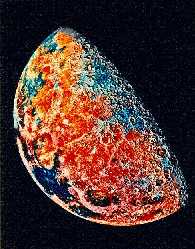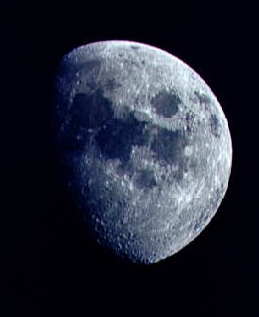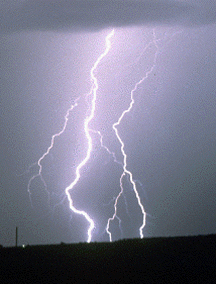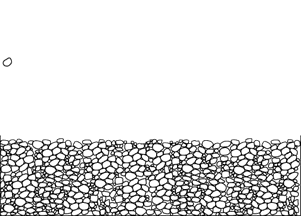This drawing shows how individual molecules may move near the surface of the Moon to form an atmosphere.
NASA
The Lunar Atmosphere
In decades past it was accepted that moons such as the Earth's moon or the moons of Jupiter were airless bodies with no atmosphere whatsoever. Now, however, measurements have shown that most of these moons are surrounded by a *very* thin region of molecules which might be loosely classified as an atmosphere. Such is the case with the Moon.
The atmosphere may come from a couple of sources, one source is
outgassing or the release of gases such as
radon, which originate deep within the Moon's
interior. Abundant gases, such as nitrogen and carbon dioxide
and carbon monoxide, can be outgassed along with rare gases such as
radon.
Another source, as shown in this diagram, are molecules which are loosened from the surface by bombardment of the surface by other molecules from space. These molecules may migrate across the surface of the Moon, to colder regions where they recondense into the ground, or they may fly off into space. This mechanism may be a source of lunar water. This mechanism is also a source of abundant helium.
Because its surface is
protected by neither an atmosphere nor a magnetosphere, the Moon is constantly
exposed to the solar wind, which carries both
hydrogen and helium. These molecules become embedded in the Moon's surface. He3, is the ideal material to fuel fusion
reactions. When scientists develop a more thorough
understanding of fusion, and can practically
implement the relevant reactions, the Moon may be a
priceless resource, since it is by far the best
source of He3 anywhere in the Solar System.
You might also be interested in:

How did life evolve on Earth? The answer to this question can help us understand our past and prepare for our future. Although evolution provides credible and reliable answers, polls show that many people turn away from science, seeking other explanations with which they are more comfortable.
...more
The atmosphere of the Moon may come from a couple of sources, one source is outgassing or the release of gases such as radon, which originate deep within the Moon's interior. Gases are released from the
...more
In decades past is was accepted that the Moon contained no water. Moon rocks collected by Apollo astronauts (at lunar equatorial regions) contained no traces of water. Lunar mapping performed by the Galileo
...more
The Earth's one natural satellite, the Moon, is more than one quarter the size of Earth itself (3,474 km diameter), making the Earth-Moon system virtually a double-planet. Because of its smaller size,
...more
Any successful theory must account for everything we know about the Moon now. Those things include the moon seems to be made of the same material as the Earth's upper mantle. the Moon has little or no
...more
Although the Moon does not appear to have a magnetosphere surrounding it, it *is* a magnetic object in space. Scientists think that the magnetism of the Moon's surface is leftover from a time when the
...more
Any successful theory must account for everything we know about the Moon now, as well as make predictions about future observations. There are three theories about how the moon came to be in place: that
...more
Here's a safe and easy way to make lightning. You will need a cotton or wool blanket. This experiment works best on a dry, cool night. Turn out all the lights and let your eyes adjust to the darkness.
...more












